- Why Soil Quantity Matters for Seedling Growth
- 1. Adequate root development
- 2. Moisture regulation
- 3. Nutrient availability
- 4. Space efficiency
- Understanding the Importance of Proper Soil Volume
- The Role of Pot Size in Seedling Development
- 1. Root Development
- 2. Watering and Drainage
- 3. Space and Light Requirement
- 4. Transplant Shock
- Conclusion
- Don’t Believe the Myth: Bigger Pots Aren’t Always Better
- How to Determine the Right Soil Amount for Your Seedlings
- Consider the Size of the Seedlings
- Choose the Right Pot Size
- Use Well-Draining Soil
- Pay Attention to Watering
- Monitor Seedling Growth
- A Simple Calculation to Get the Best Results
- Step 1: Measure the Pot Size
- Step 2: Calculate the Volume
- Step 3: Convert to Quarts
- Step 4: Adjust for Planting Depth
- Step 5: Determine the Seedling’s Soil Needs
- Considering the Nutrient Needs of Seedlings
- 1. Essential Nutrients
- 2. Soil Fertility
- 3. Organic Matter
- 4. pH Levels
- 5. Fertilizers
- 6. Watering
- Strike a Balance to Ensure Healthy Growth
- 1. Choose the Right Size Pot
- 2. Use a Well-Draining Soil Mix
- 3. Provide Adequate Watering
- 4. Consider the Plant’s Needs
- 5. Monitor Growth and Re-pot as Necessary
- Troubleshooting Common Soil-Related Growth Issues
- Inadequate Drainage
- Nutrient Deficiencies
- Compact Soil
- Poor Soil Quality
- Identifying Problems and Finding Solutions
- 1. Overwatering
- 2. Underwatering
- 3. Nutrient deficiencies
- 4. Pest infestations
- 5. Lack of sunlight
- “Question-Answer”
- How much soil should I use for seedlings?
- Do I need to use large pots for seedlings?
- What happens if I use a pot that is too large for my seedlings?
- Can I reuse soil from previous plantings for seedlings?
- How often should I water seedlings?
- “Video” How to Get the Best Drainage for Your Container – Why What You’ve Been Taught is all Wrong
When it comes to gardening and growing seedlings, choosing the right pot size and amount of soil is crucial for their optimal growth. Many beginners often assume that bigger pots will provide more space for the roots to spread and allow the plants to grow faster. However, this is not always the case, and in fact, using oversized pots can sometimes do more harm than good.
The truth is, seedlings need just enough soil to support their initial growth and establish a healthy root system. When the pot is too big, excess soil can retain too much moisture, leading to issues like root rot and fungal diseases. Additionally, a larger pot will require more water to saturate the entire soil volume, which can lead to overwatering if not done properly. Therefore, it is important to choose the right pot size for your seedlings to ensure their overall health and development.
A general rule of thumb is to use pots that are only slightly larger than the seedlings’ root ball. This means that as the roots grow and expand, they will have enough space to spread out and access the nutrients they need. Starting small also encourages the plant to develop a robust root system, which is essential for its long-term growth and resilience.
“When it comes to potting seedlings, it’s all about striking the right balance between providing enough space for the roots to grow and ensuring that excess soil doesn’t become a breeding ground for problems.”
Moreover, using smaller pots can also help you save money and resources. Buying smaller pots means you can use less soil, which is not only cost-effective but also reduces the risk of overwatering and wasting precious resources. It also makes it easier to manage and transport the seedlings as they grow, as you won’t be dealing with heavy pots that can be cumbersome to move around.
So, the next time you’re potting seedlings, remember that bigger is not always better. Give your plants the right amount of soil and space they need for optimal growth, and you’ll be rewarded with healthy and thriving plants in no time.
Why Soil Quantity Matters for Seedling Growth
When it comes to growing seedlings, having the right amount of soil is crucial for their optimal growth. While many gardeners may think that bigger pots with more soil are better for seedlings, the truth is that seedlings actually thrive in smaller containers with just the right amount of soil.
1. Adequate root development
Seedlings need space for their roots to grow and develop. When seedlings are grown in pots that are too large, the excess soil can lead to poor root development. The roots may struggle to explore the large volume of soil, which can hinder their growth and nutrient uptake.
Growing seedlings in smaller pots ensures that the roots have enough soil to grow and develop without being overwhelmed. The limited space encourages the roots to explore the soil more efficiently, resulting in stronger and healthier root systems.
2. Moisture regulation
Having the right amount of soil is also important for regulating moisture levels around the roots. Too much soil can lead to excess moisture, which can cause root rot and other fungal diseases. On the other hand, too little soil can lead to rapid drying out of the roots.
Having the correct soil-to-seedling ratio allows for better moisture regulation. The soil can retain enough moisture for the roots to absorb, but not become waterlogged. This helps prevent the risk of diseases and promotes healthier growth.
3. Nutrient availability
Soil is a source of important nutrients for seedlings. However, having too much soil can dilute the nutrients, making it harder for the roots to access them. Conversely, too little soil may not provide enough nutrients for the seedlings’ needs.
By providing the right amount of soil, seedlings can access the nutrients they require more effectively. The soil can hold and release nutrients in a balanced manner, ensuring that the seedlings receive an adequate supply for optimal growth.
4. Space efficiency
Using smaller pots with the right amount of soil can also offer space efficiency benefits. When multiple seedlings are being grown, smaller containers take up less space compared to larger pots. This allows gardeners to grow more seedlings in a limited area, maximizing their garden’s potential.
Additionally, when it comes time to transplant the seedlings, they will have a more compact root system that is better suited for transitioning to larger pots or the garden bed.
In conclusion, providing the right amount of soil is essential for seedling growth. Using smaller pots with adequate soil offers benefits such as better root development, improved moisture regulation, optimal nutrient availability, and space efficiency. So, don’t rush to buy large pots – instead, focus on providing the perfect soil-to-seedling ratio for the best results.
Understanding the Importance of Proper Soil Volume
When it comes to the growth and development of seedlings, the volume of soil they are planted in plays a crucial role. Providing the right amount of soil volume is essential for ensuring optimal growth and preventing any potential problems.
1. Nutrient Availability: Proper soil volume allows for an adequate distribution of nutrients throughout the growing medium. This ensures that seedlings have access to the necessary elements, such as nitrogen, phosphorus, and potassium, which are essential for their healthy development.
2. Water Retention: Sufficient soil volume helps in retaining moisture, preventing the soil from drying out too quickly. This helps seedlings maintain a consistent level of hydration, promoting steady growth and preventing wilting or dehydration.
3. Root Development: Adequate soil volume allows for proper root development. Ample space promotes the growth of a robust root system, enabling efficient water and nutrient uptake. Insufficient soil volume can restrict root growth, leading to stunted development and unhealthy seedlings.
4. Air Circulation: A proper soil volume ensures sufficient air circulation within the root zone. Oxygen is vital for root respiration, and a well-aerated root zone promotes healthy root growth. Insufficient soil volume can restrict air circulation, leading to oxygen deprivation and potential root rot.
5. Disease Prevention: A larger soil volume can help prevent the spread of diseases and pests. Adequate spacing between seedlings reduces the risk of fungal or bacterial infections, as well as prevents overcrowding that can attract pests.
6. Stability: With a sufficient soil volume, seedlings are less prone to falling over or toppling, especially as they grow taller and develop a more extensive root system. This stability allows for healthier and more resilient plants.
Conclusion: Providing the right amount of soil volume is crucial for the optimal growth and development of seedlings. It ensures the availability of nutrients, proper water retention, promotes root development and air circulation, prevents disease, and provides stability. Therefore, it is important to consider the appropriate soil volume when transplanting seedlings to promote their overall health and success.
The Role of Pot Size in Seedling Development
When it comes to growing seedlings, the size of the pot plays a crucial role in their development. While it may be tempting to use large pots, it is important to understand how pot size affects the growth of seedlings. This article will explain the significance of pot size and provide insights into the optimal pot size for seedling development.
1. Root Development
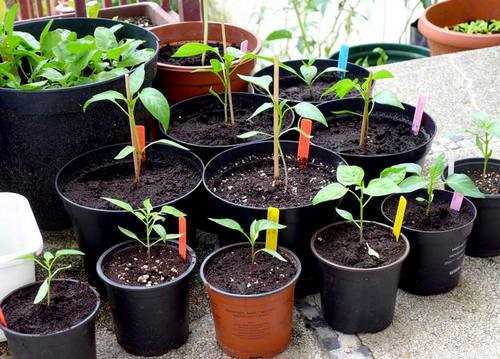
One of the main factors affected by pot size is root development. Seedlings require a healthy and well-developed root system to absorb sufficient nutrients and water from the soil. When seedlings are grown in pots that are too large, the excess soil can prevent the roots from reaching the edges of the pot. As a result, the root system may become limited and less efficient in nutrient and water uptake.
On the other hand, if seedlings are grown in pots that are too small, the restricted space can hinder root growth and lead to root binding. Root binding occurs when the roots become crowded and begin circling around the pot. This can result in girdling roots, which can negatively impact the overall health and growth of the seedling.
2. Watering and Drainage
Pot size also plays a role in watering and drainage. Seedlings in pots that are too large may retain excess water for longer periods, leading to waterlogged roots and increased risk of root rot. Conversely, seedlings in pots that are too small may suffer from insufficient water retention and may require more frequent watering to prevent dehydration.
It is important to choose a pot size that allows for adequate water retention and drainage. This can be achieved by selecting a pot with drainage holes at the bottom and a size that allows for proper water absorption and evaporation.
3. Space and Light Requirement
The size of the pot also affects the amount of space and light available to the seedling. If seedlings are grown in pots that are too large, the excess soil can create a barrier between the plant and the available light. As a result, the seedling may not receive adequate light for photosynthesis, which is essential for healthy growth.
On the other hand, if seedlings are grown in pots that are too small, they may become overcrowded and compete for available space. This can lead to stunted growth and a weaker overall plant structure.
4. Transplant Shock
Finally, the size of the pot can also impact the transplanting process. When seedlings are grown in pots that are too small and then transplanted into larger pots or the ground, they may experience transplant shock. Transplant shock can occur when the roots of the seedling are disturbed during the transplanting process, leading to temporary growth setbacks and stress.
By choosing an appropriate pot size from the start, seedlings can develop healthy root systems and be better prepared for the transplanting process.
Conclusion
In conclusion, pot size plays a vital role in the development of seedlings. It affects root development, watering and drainage, space and light requirements, and the likelihood of transplant shock. It is essential to select an appropriate pot size that provides the optimal conditions for seedling growth and development. By considering these factors, gardeners can ensure that their seedlings have the best chance of thriving and reaching their full potential.
Don’t Believe the Myth: Bigger Pots Aren’t Always Better
When it comes to growing seedlings, there is a common misconception that bigger pots are always better. Many people believe that providing seedlings with a larger pot will allow their roots to spread out and grow more freely, resulting in healthier and stronger plants. However, this belief is not always true.
While it is important to provide seedlings with enough space to grow, excessively large pots can actually hinder their development. When seedlings are placed in pots that are too large, the excess soil can hold too much water, leading to root rot and other moisture-related issues. Additionally, a large pot filled with too much soil can also make it difficult for the roots to access the necessary nutrients, as they may be spread out too thinly.
Instead of focusing on the size of the pot, gardeners should pay more attention to the quality of the soil and the overall growing conditions. Providing seedlings with a well-draining soil mix that is rich in organic matter is more essential for their optimal growth than a larger pot. The seedlings need oxygen around their roots, and a soil mix that retains too much moisture can suffocate them.
A better approach is to start seedlings in smaller pots or trays, and then transplant them into larger pots as they grow. This way, the roots have a chance to establish themselves and access the necessary water and nutrients before being exposed to a larger volume of soil. It also allows gardeners to monitor the growth of the seedlings and make sure they are not being overwatered or suffocated by excess soil.
It is also worth noting that using smaller pots can be more cost-effective and space-saving. Instead of investing in a large number of big pots, gardeners can use smaller ones and save money and space in their gardening area.
In conclusion, bigger pots are not always better for seedlings. It is important to provide them with the right amount of space and a well-draining soil mix to ensure optimal growth. Starting seedlings in smaller pots and gradually transplanting them into larger ones allows for better root establishment and more controlled growing conditions. So, don’t believe the myth – bigger pots aren’t always better!
How to Determine the Right Soil Amount for Your Seedlings
When it comes to growing seedlings, providing them with the right amount of soil is crucial for their optimal growth. Too little soil can stunt their roots’ development, while too much soil can lead to waterlogging and root rot. Here are some guidelines to help you determine the right soil amount for your seedlings:
Consider the Size of the Seedlings
The size of your seedlings will determine the amount of soil they need. Smaller seedlings, such as herbs or lettuce, require less soil compared to larger seedlings like tomatoes or peppers. A general rule of thumb is to provide enough soil to support the growth of the seedling’s root system, which usually extends about 2-3 inches below the surface.
Choose the Right Pot Size
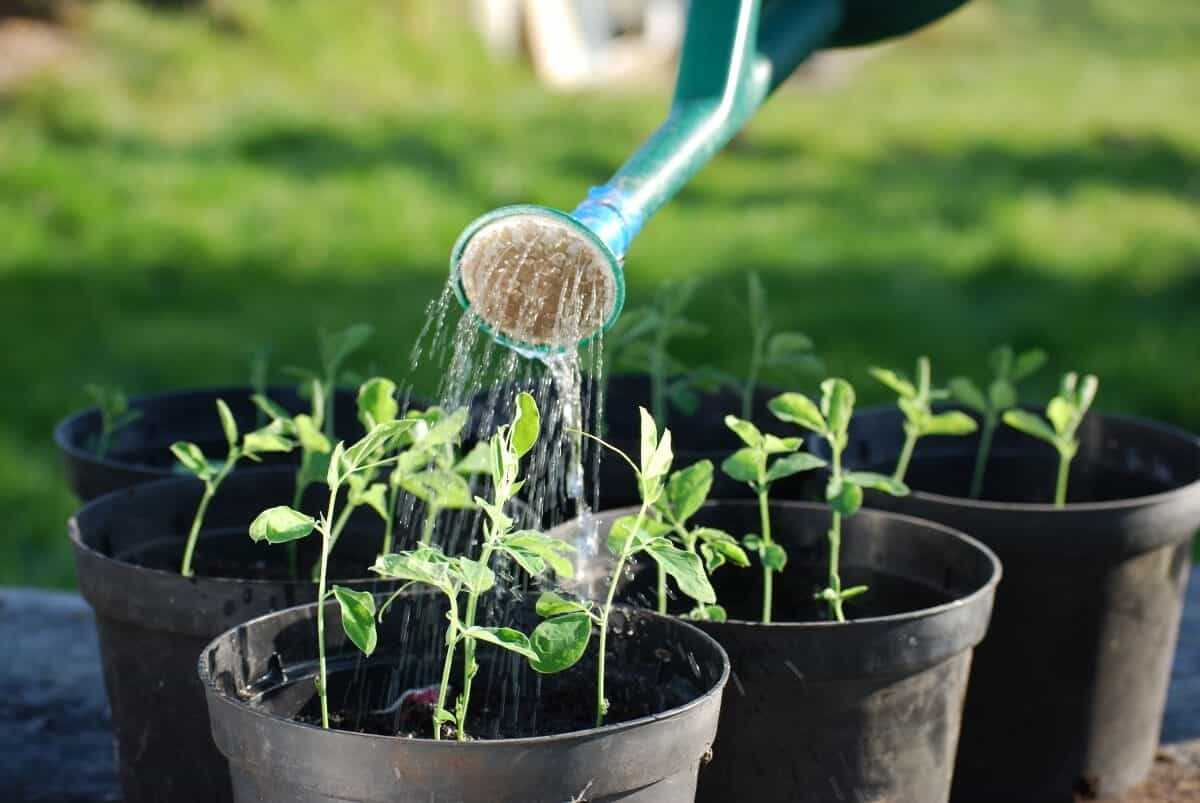
Choosing the right pot size is essential for providing the appropriate amount of soil. Using pots that are too large can lead to excessive soil that isn’t utilized by the seedling’s roots. Start with small pots and then gradually move them to larger ones as the seedlings grow. This approach allows you to adjust the soil amount and minimize waste.
Use Well-Draining Soil
Using well-draining soil is crucial to preventing waterlogging and root rot. The soil should be loose and well-aerated to allow water to drain properly. This ensures that the seedlings’ roots have access to oxygen, which is vital for their growth and development. Avoid using heavy clay soils that can become compacted and retain too much moisture.
Pay Attention to Watering
Watering your seedlings correctly is just as important as providing the right amount of soil. Overwatering can lead to waterlogged soil, while underwatering can cause the seedlings to dry out and wilt. Monitor the soil moisture levels regularly and adjust your watering routine accordingly.
Monitor Seedling Growth
Keep an eye on the growth of your seedlings to ensure they are thriving. If the roots start to become overcrowded or emerge from the drainage holes of the pot, it’s time to transplant them to a larger container with more soil. Transplanting at the right time prevents the seedlings from becoming root-bound and allows for continued growth.
By considering the size of your seedlings, choosing the right pot size, using well-draining soil, and monitoring their growth, you can determine the right amount of soil needed for your seedlings. Providing optimal soil conditions will give them the best chance to grow into healthy, thriving plants.
A Simple Calculation to Get the Best Results
When determining how much soil your seedlings need for optimal growth, a simple calculation can help you achieve the best results. By calculating the volume of soil required, you can ensure your seedlings have enough space for root development while avoiding the waste of excess soil.
Step 1: Measure the Pot Size
Start by measuring the size of the pot or container you plan to use for your seedlings. Measure the diameter and height of the pot in inches. Let’s say your pot has a diameter of 6 inches and a height of 4 inches.
Step 2: Calculate the Volume
To calculate the volume of soil needed, use the formula for the volume of a cylinder: V = πr2h, where V is the volume, π is the mathematical constant Pi (approximately 3.14), r is the radius (half of the diameter), and h is the height of the pot.
In our example, the radius would be half of the diameter, so r = 6 / 2 = 3 inches. Plugging these values into the formula, we get:
V = 3.14 * (32) * 4 = 3.14 * 9 * 4 = 113.04 cubic inches.
Step 3: Convert to Quarts
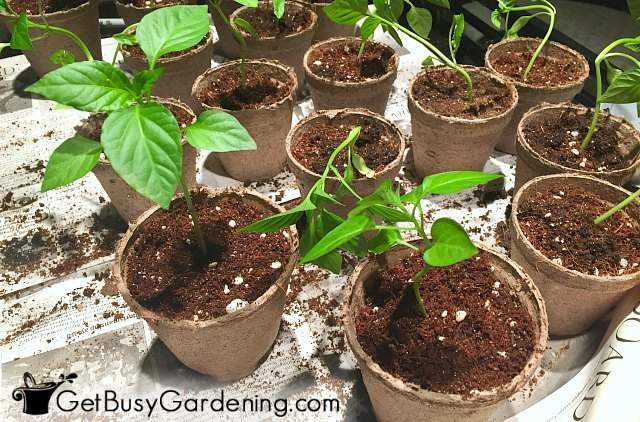
To convert the volume from cubic inches to quarts, divide the cubic inches by 57.75 (the number of cubic inches in a quart). In our example, 113.04 / 57.75 = 1.96 quarts.
Step 4: Adjust for Planting Depth
Keep in mind that the calculated volume only accounts for the space needed for the roots. You’ll need to add extra soil to account for the planting depth. A good rule of thumb is to add an extra inch of soil for the planting depth.
In our example, add 1 inch to the calculated volume of 1.96 quarts, giving you a total of 2.96 quarts.
Step 5: Determine the Seedling’s Soil Needs
Lastly, consider the specific soil needs of your seedlings. Some plants may require more or less soil volume to thrive. Research the specific plant variety you’re growing to determine if any adjustments are necessary.
By following this simple calculation, you can ensure your seedlings have the ideal amount of soil for optimal growth. Avoid the common mistake of using overly large pots, as they can lead to excessive soil moisture and hinder root development. Instead, focus on providing just the right amount of soil for your seedlings’ needs.
Considering the Nutrient Needs of Seedlings
When it comes to the optimal growth of seedlings, it’s not just the amount of soil that matters but also the nutrients available to them. Seedlings have specific nutrient needs that must be met in order for them to develop into healthy, robust plants. Here are some key considerations when it comes to providing the right nutrients for your seedlings:
1. Essential Nutrients
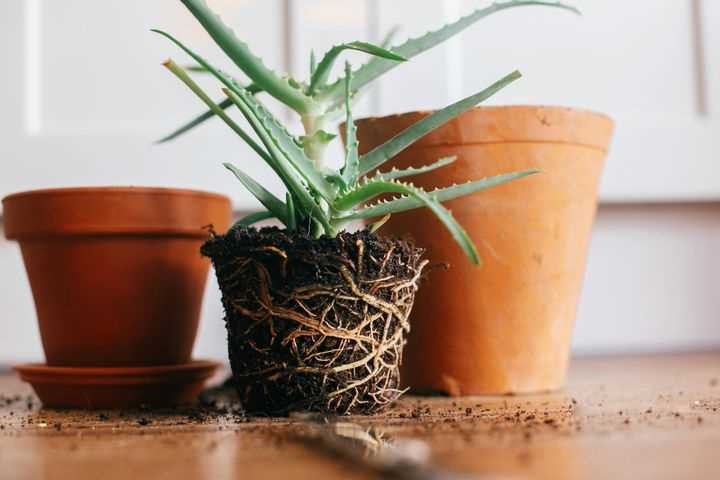
Seedlings require a range of essential nutrients to support their growth. These include macronutrients such as nitrogen, phosphorus, and potassium, as well as micronutrients such as calcium, magnesium, and zinc. Each nutrient plays a specific role in the development of the seedling, from supporting photosynthesis to promoting root growth.
2. Soil Fertility
The fertility of the soil in which seedlings are grown is crucial for ensuring an adequate supply of nutrients. Testing the soil for its nutrient content can help determine if any deficiencies or imbalances exist. Based on the results, you can then amend the soil with organic matter or fertilizers to provide the necessary nutrients.
3. Organic Matter

In addition to providing nutrients, organic matter helps improve soil structure and moisture retention, which are important for seedling growth. Adding compost or well-rotted manure can increase the organic matter content of the soil and contribute to a healthier growing environment for your seedlings.
4. pH Levels
The pH level of the soil also plays a role in nutrient availability. Most seedlings prefer a slightly acidic to neutral pH range (around 6.0 to 7.0) for optimal nutrient uptake. Testing the soil’s pH and adjusting it if necessary can help ensure that the seedlings can access the nutrients they need.
5. Fertilizers
In some cases, additional fertilizers may be necessary to meet the nutrient requirements of seedlings. Organic fertilizers, such as compost tea or fish emulsion, can provide a slow-release source of nutrients. Alternatively, synthetic fertilizers can be used, but it’s important to follow the instructions carefully to avoid over-fertilization, which can be harmful to seedlings.
6. Watering
Proper watering is essential for nutrient uptake in seedlings. Overwatering or underwatering can inhibit nutrient absorption and lead to nutrient deficiencies. It’s important to monitor the moisture level of the soil and provide water as needed to keep the soil moist but not waterlogged.
By considering the nutrient needs of your seedlings and providing the right conditions, you can help support their growth and ensure they develop into healthy, thriving plants.
Strike a Balance to Ensure Healthy Growth
When it comes to providing the optimal amount of soil for seedlings, striking a balance is key. While seedlings do require adequate root space to grow, using too large of a pot can actually hinder their growth. Here are a few tips to strike the right balance and ensure healthy growth for your seedlings:
1. Choose the Right Size Pot
While it may be tempting to start seedlings in large pots to give them plenty of room to grow, this can actually be counterproductive. Seedlings may become overwhelmed by the excess soil, leading to poor root development. Instead, choose a pot that is just slightly larger than the seedling’s root ball. This will provide enough space for the roots to expand without overwhelming them.
2. Use a Well-Draining Soil Mix
Seedlings prefer a well-draining soil mix that allows water to flow through freely. Using a heavy or compact soil mix can lead to waterlogged roots and root rot. Look for a mix that is specifically designed for seedlings or create your own by combining equal parts of potting soil, perlite, and vermiculite.
3. Provide Adequate Watering
Seedlings require regular watering to stay hydrated, but it’s important to avoid over-watering. Over-watering can lead to root rot and other fungal diseases. Instead, water your seedlings when the top inch of soil feels dry to the touch. Allow excess water to drain away and never let the seedlings sit in standing water.
4. Consider the Plant’s Needs
Different types of seedlings have different needs when it comes to soil and pot size. Research the specific requirements of the plants you are growing and adjust accordingly. Some seedlings may thrive in smaller pots, while others may require more space to grow. Pay attention to the plant’s growth rate and adjust the pot size as needed.
5. Monitor Growth and Re-pot as Necessary
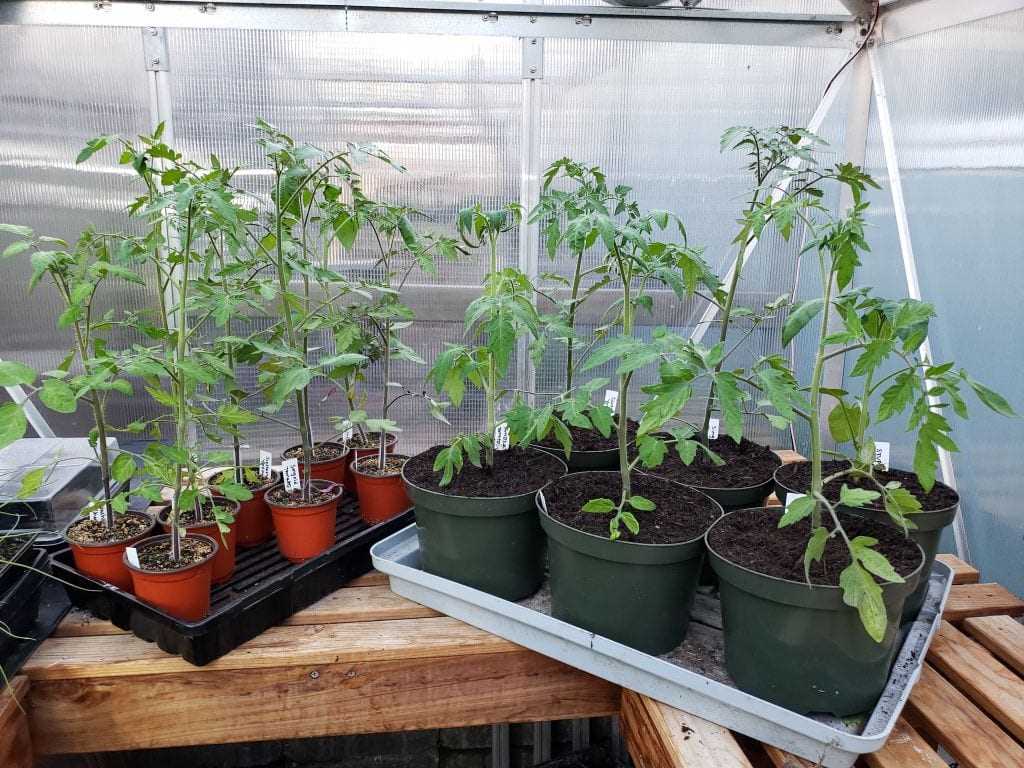
As your seedlings grow, monitor their root development and overall health. If the roots start to become crowded and circling around the pot, it may be time to re-pot them into a slightly larger container. However, avoid re-potting too frequently, as this can cause stress to the seedlings.
By following these guidelines and striking a balance between pot size and root space, you can ensure healthy growth for your seedlings. Remember to provide proper watering and monitoring to give your seedlings the best chance at success.
Troubleshooting Common Soil-Related Growth Issues
When it comes to seedling growth, the soil plays a crucial role in providing nutrients, water, and a stable medium for roots to grow. However, there can be several soil-related issues that can hinder the optimal growth of seedlings. Here are some common problems you may encounter and possible solutions to troubleshoot them.
Inadequate Drainage
One common issue is inadequate drainage, which can lead to waterlogged soil and root rot. If you notice that the soil is consistently damp or water accumulates at the bottom of the pots, you may need to improve drainage. Here are some solutions:
- Ensure your containers have drainage holes at the bottom to allow excess water to escape.
- Use a well-draining potting mix that consists of a blend of soil, compost, and perlite or vermiculite.
- Consider adding a layer of gravel or small stones at the bottom of the pot to facilitate drainage.
Nutrient Deficiencies
Another common issue is nutrient deficiencies, which can result in stunted growth, yellowing leaves, and overall poor development. To address nutrient deficiencies, consider the following:
- Choose a nutrient-rich potting mix or consider adding organic matter, such as compost or well-rotted manure, to the soil.
- Use a balanced fertilizer specifically formulated for seedlings and follow the instructions for proper application.
- Regularly monitor the pH level of the soil and adjust it if necessary. Most seedlings prefer a slightly acidic to neutral pH range.
Compact Soil
Compact soil can hinder root growth and make it difficult for seedlings to establish themselves. Here are some solutions for addressing compact soil:
- Loosen the soil gently with a garden fork or a small hand trowel to create a looser and aerated planting area for seedlings.
- Amend the soil with organic matter like compost to improve its texture and drainage.
- Avoid overwatering, as excessive moisture can lead to compact soil and hinder root growth.
Poor Soil Quality
If your seedlings are struggling despite adequate water, nutrient balance, and drainage, it could be an issue with the soil quality. Consider the following remedies:
- Conduct a soil test to determine its pH level and nutrient content. Based on the results, make necessary adjustments.
- Consider using a high-quality potting mix specifically formulated for seedlings.
- Rotate crops and practice crop rotation to prevent the nutrient depletion of the soil.
Addressing these common soil-related growth issues can greatly improve the health and development of seedlings. By providing the right growing conditions, you can ensure optimal growth and give your seedlings the best chance of success.
Identifying Problems and Finding Solutions
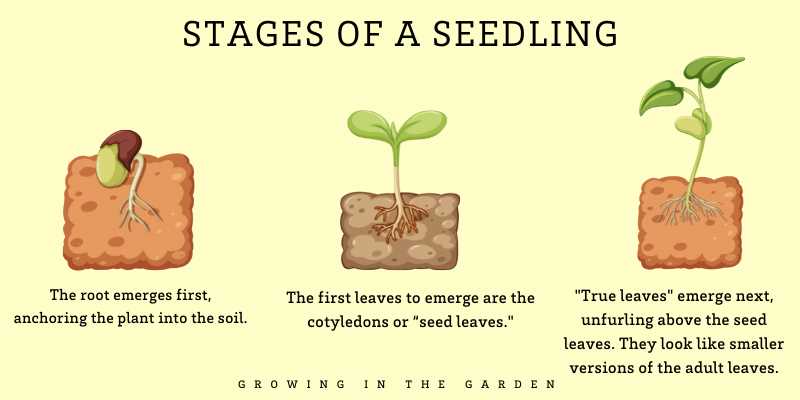
1. Overwatering
Overwatering can lead to root rot and stunted seedling growth. It is important to avoid keeping the soil too wet for extended periods of time. To solve this problem:
- Check the soil moisture before watering by sticking your finger into the soil up to the first knuckle. If it feels moist, hold off on watering.
- Ensure proper drainage by using pots with drainage holes and placing a layer of gravel or broken pottery at the bottom of the pot.
- Adjust the watering frequency based on the specific needs of the seedling and the environmental conditions.
- Consider using a self-watering system or bottom watering to prevent overwatering.
2. Underwatering
Underwatering can cause seedlings to wilt and can hinder their overall growth. To address this problem:
- Monitor the soil moisture regularly and water the seedlings when the top inch of the soil feels dry to the touch.
- Water thoroughly until water runs out of the drainage holes, ensuring the entire root zone is moistened.
- Use a moisture meter or self-watering system to ensure consistent watering.
3. Nutrient deficiencies
Insufficient nutrients can lead to yellowing leaves, stunted growth, and poor seedling health. To tackle this problem:
- Provide a balanced and nutrient-rich soil mix to supply essential nutrients to the seedlings.
- Consider using organic fertilizers or compost to replenish nutrients over time.
- Monitor the seedlings for signs of nutrient deficiencies and adjust fertilization accordingly.
4. Pest infestations
Pests such as aphids, spider mites, and fungus gnats can damage seedlings and hinder their growth. To combat pests:
- Regularly inspect the plants for signs of pests, including discoloration, distorted leaves, or visible insects.
- Isolate any infested plants to prevent the spread of pests.
- Use organic pest control methods such as neem oil, insecticidal soap, or beneficial insects to manage infestations.
5. Lack of sunlight
Inadequate sunlight can result in weak and leggy seedlings. To overcome this issue:
- Place the seedlings in a location with bright, indirect sunlight or use grow lights if natural light is limited.
- Adjust the height and duration of artificial lights to simulate natural sunlight conditions.
- Rotate the seedlings regularly to ensure equal exposure to light.
“Question-Answer”
How much soil should I use for seedlings?
For optimal growth, seedlings require about 2-3 inches of soil in their pots.
Do I need to use large pots for seedlings?
No, it’s not necessary to use large pots for seedlings. They only need enough soil to support their initial growth.
What happens if I use a pot that is too large for my seedlings?
Using a pot that is too large for seedlings can lead to overwatering and poor root development. It’s important to match the pot size to the size of the seedlings.
Can I reuse soil from previous plantings for seedlings?
Yes, you can reuse soil from previous plantings for seedlings. Just make sure to remove any large roots or debris and add some fresh compost or fertilizer to replenish the nutrients.
How often should I water seedlings?
Seedlings should be watered regularly, but it’s important not to overwater. The soil should be kept evenly moist, but not soaked. Watering once or twice a week is usually sufficient.







